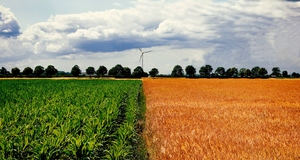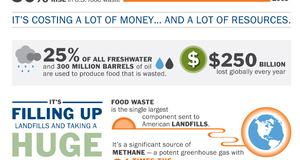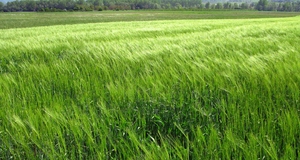From Discussions VOL. 10 NO. 3The GM Crop Network: An Overview of the Environmental, Political, Economic, and Human Health Contexts Surrounding Bt Corn
KEYWORDS:
A genetically modified (GM) crop is defined as a recombinant-deoxyribonucleic acid plant, in which genetic material has been changed through in vitro nucleic acid techniques (Food and Agriculture Organization of the United States, 2014). Food and its constituting ingredients derived from GM crops were introduced to the United States food supply in the 1990s (Food and Drug Administration), and have since then become a controversial topic everywhere from family households to governmental settings. Pro and anti-GM partisans have continued to mold the conversation through debates interfacing several disciplines, yet has this polarization and lack of balanced consumer education benefited the public? Have individuals been provided with enough background knowledge through public health programs, scientific research, or even through food labeling to construct opinions? At first glance, GM crops appear to simply exist within a philosophical controversy, however upon further inquiry, an entirely different puzzle emerges. Plant science, agriculture, and human medicine are all disciplines linked to the GM conversation, but is this connection the same for economics and politics? How do seed patenting rights, pursuits to increase farm yields, and global food demands affect the cultivation of these crops? Complexity can indeed quickly overshadow this dialogue about genes and food, further increasing the existent barrier between food producers and consumers. Thus, evaluating the overall success of genetically modified crops requires a case-by-case analysis and an evaluation of their respective agricultural, human health, economic, and political contexts. In particular, research regarding Bacillus thuringiensis (Bt) corn should undoubtedly be of interest to several professions including, doctors, scientists, businesspeople, and elected officials as it is one of the most commonly planted GM crops in the world. Bt is a gram positive soil bacteria that produces a family of crystal (Cry) proteins, which contain insecticidal properties (Neppl, 2000). Many of the topical insecticides that were previously manually sprayed on crops, are now genetically inserted into certain plant genomes to obtain greater efficiency and efficacy. This background information regarding Bt crops illustrates the revolutionary effects genetic engineering may have on agriculture in the future. Without a doubt, molecular biology techniques are an enticing mechanism to increasing crop yields, thus growing greater quantities of food and feeding more people. That being said, does this simple arithmetic add up? Has this truly been the primary motive in the global expansion of Bt corn? The agriculture industry is greatly shaped by external influences . The everlasting struggle of the Food and Drug Administration to control the prophylactic use of antibiotics in livestock feed and the mere presence of grocery store aisles stocked with calorie rich but nutrient poor foods serve as examples illustrating the strong corporate influences within the industry. Moreover, with specific respect to corn, outside data and research reveal the primary factors driving this crop’s production, thus indirectly promoting the use Bt transgenic technology. The use of stover, also known as leaves and stalks derived from corn, is increasingly being used for livestock feed and industrial purposes. The Iowa Corn Organization reports ethanol, distiller grain, and “other processing” as the top three uses of corn in the United States (Iowa Corn Organization, 2013). Likewise, it is useful to note that the USDA reported that in 2012, 88 percent of corn grown in the United States was genetically modified (Dupont, 2013). Although Bt is not the only genetic modification incorporated into corn plant genomes, it comprises a majority of this overall percentage. Analyses will demonstrate that Bt corn is encompassed within a multidisciplinary network of external influences, which continue to drive its cultivation, growth, and industrial promotion. Ironically, we see that human nutrition, health, and environmental preservation interests are no where to be found in within the primary motives for planting Bt corn. Ethanol is primarily used as an oxygenate in gasoline production to produce various common ethanol fuel mixtures (US Department of Energy). While such biofuels have been noted to be more “eco-friendly”, a recent study released in a peer-reviewed journal, Nature Climate Change, concludes that biofuels made with corn residue release 7% more greenhouse gases in the early years compared with conventional gasoline (Liska et al., 2014). This federally funded study states that while corn biofuels may help decrease carbon dioxide emissions in the long run, they fail to classify corn-based ethanol as a renewable energy source as defined by the Energy Independence and Security Act of 200. In addition to these research conclusions, we must also consider the machinery and fertilizer used, transportation needed, ,and water used to plant and harvest corn in assessing the biofuel’s carbon footprint (McKenna, 2007). The United Nations Intergovernmental Panel on Climate Change has stated that, “Increasing bioenergy crop cultivation poses risks to ecosystems and biodiversity” (IPCC, 2013), and attributing 30% of corn usage to ethanol production seems to be an awful lot for the amount of conflicting research regarding its carbon emissions . Regardless of ethanol biofuel’s potential positive impact, it is curious to note the country’s dedication to using precious agricultural land to plant corn, most likely of a Bt variety, which is not feeding its citizens . Yes, many would still certainly refuse to consume Bt corn for various reasons if it were actually being shipped directly to grocery stores. The importance, rather, is the concept that agricultural land should be used for its specific purpose, feeding and nourishing individuals. Those opposing may indicate that these crop fields actually are contributing to satisfied appetites, perhaps indirectly. Livestock feed, through the use of corn distiller grain, has become the primary external factor driving the production of corn. Though the demand for milk has decreased 36% since the 1970s in the United States (Cardello, 2013), global meat production has tripled in the last four decades (World Watch Institute, 2011). Danielle Nierenberg, Director of the Nourishing Planet Program, states that, “Much of the vigorous growth in meat production is due to the rise of industrial agriculture…” and that, “Factory farms pollute the environment through the heavy use of inputs such as pesticides, herbicides, and fertilizers, used for feed production”. Putting this all together, we see a direct relationship between corn and meat production; increased demand for meat propels more Bt corn to be planted. This association again illustrates that corn is not being grown feed people, contradicting industry voices that claim planting more of their patented seeds will feed more individuals. To food activists or others interested in the complex conversations regarding food, these are not novel concepts or facts. The difference has rather been the continued production of genetically modified crops without the necessary emphasis on human health or environmental research. We have briefly touched upon the primary external drivers affecting Bt corn: agriculture, ethanol biofuel and livestock feed production respectively. It is clear that cornbased ethanol biofuel and industrial animal farming negatively impact the environment as well. Furthermore before proceeding into the human health implications associated with Bt corn, it is important to critically analyze two more portions of this network: crop yields and seed patenting rights. On paper, Bt corn seeds should be attractive to every farmer and environmentalist. Why? In theory, this transgenic technology results in decreased grower handling and diminished topical application of insecticide to the crop fields. The plant is able to grow with innate insecticide properties that protect it from specific species, such as the European corn borer. These pests have been labeled as “silent thieves” because many growers often do not realize the 5-10% decrease in yields due to corn stalk tunneling and ear injury from the corn borer (Hellmich, 2012). Within this same crop yield study, Dr. Richard Hellmich at Iowa State University states that, “…the cumulative decrease in insecticide active ingredient use on Bt maize was 35% globally”. The paper however, does not indicate what the “active ingredient” is. Regardless, this study and several similar research articles associating Bt corn with increased crop yields clearly demonstrate that the GM crop can carry out its function. Bt corn has the capability of increasing crop yields and decreasing insecticide use due to increased protection against a specific group of pests. Despite these noted benefits of Bt corn, contrary research exists. Multiple studies have evidence that contradicts the claim that Bt corn is beneficial for increasing crop yields and decreasing insecticide use. One such paper from the University of Canterbury in New Zealand in 2013 includes two very bold paragraphs: “GM cropping systems have not contributed to yield gains, are not necessary for yield gains, and appear to be eroding yields compared to the equally modern agroecosytem of Western Europe. This may be due in part to technology choices beyond GM plants themselves, because even non-GM wheat yield improvement in the U.S. are poor in comparison to Europe.” “Herbicide reductions can be achieved in European countries that do not adopt GM crops. In contrast, use is rising in the U.S., the major adopter of GM crops. Chemical insecticide use is decreasing both agroecosystens, but more profoundly in France (also Germany and Switzerland) that do not use GM plants and only modestly in the U.S. Total insecticide use is not decreased in the U.S. when insecticidal plants are included in total insecticide use.” (Heinemann et al., 2013). At the very least, the aforementioned University of Canterbury and Nature studies regarding Bt corn serve as exemplars for all aspects of the GMO debate. Completely opposing viewpoints continue to persist, and this polarization will frustrate none more than the lay food consumer. Analyzing studies from both sides and further noting their models and methods for research conclusions is certainly beneficial, but the answers can only ultimately be found through increased uniformity and stability within research methods and governmental policies.Continued on Next Page » Suggested Reading from Inquiries Journal
Inquiries Journal provides undergraduate and graduate students around the world a platform for the wide dissemination of academic work over a range of core disciplines. Representing the work of students from hundreds of institutions around the globe, Inquiries Journal's large database of academic articles is completely free. Learn more | Blog | Submit Latest in Environmental Studies |



















